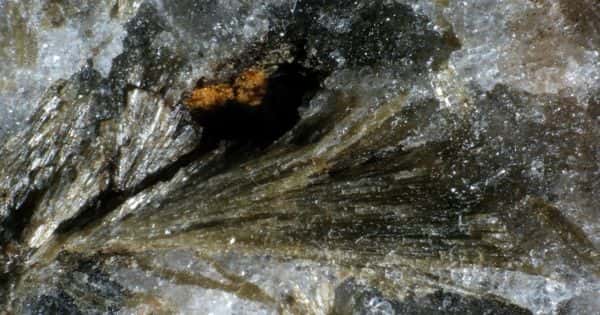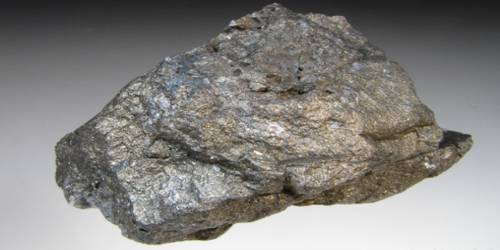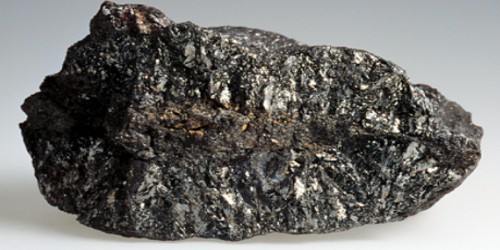Magnesiocummingtonite is a common component of some regional metamorphic rocks. It is the magnesium-rich endmember of the cummingtonite-grunerite series of the amphibole group of minerals, with the following composition: (Mg)7Si8O22(OH)2. If more intense metamorphism were to occur, the minerals hypersthene, enstatite or olivine are produced at the expense of cummingtonite.
General information
- Formula: Mg)7Si8O22(OH)2
- Transparency: Crystals are translucent to opaque.
- Crystal System: monoclinic; 2/m.
- Cleavage: is good in two directions at 56 and 124-degree angles.
- Fracture: splintery.

Properties
Magnesiocummingtonite is considered to be an aptly named magnesium-rich variety of the mineral cummingtonite which has Fe2+ substituting for some of the Mg. Divalent manganese may also substitute for magnesium in the crystal structure.
- Cleavage: {110} Good
- Color: Brown, Gray-green, White, Light Gray, Dark green.
- Density: 3.13
- Hardness: 5-6 – Between Apatite and Orthoclase
- Luster: Silky
- Streak: white
Occurrence: In metamorphosed ultrama¯c rocks of the amphibolite facies; as exsolution lamellae in magnesio-arfvedsonite.
It may be difficult to distinguish cummingtonite from the Mg-rich variety in hand specimens. However, the refractive index, specific gravity, and degree of attraction to a magnetic field increase with more Fe content.
Association: Anthophyllite, tremolite, chlorite, magnesite, talc, enstatite (Cima di Gagnone, Switzerland).
Information Source:
















